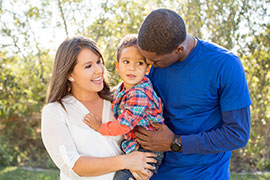Social-emotional development in young children
Why it’s so important and how you can promote it in your program and in the home
Social-emotional development. As early childhood professionals, we hear the term often. We know it’s important. While identifying delays and tracking milestones with standard development screening (in areas such as communication, gross and fine motor skills, and problem solving) is essential, it’s clear that early identification of social-emotional concerns is just as critical.
What is social-emotional development?
Social-emotional development is a child’s ability to experience, express, and manage emotions, develop positive relationships with caregivers and others, and explore their environment with curiosity and confidence.
 Ensuring that every child has strong social-emotional skills helps prepare them for school, stop the bullying epidemic, and improve their well-being
Ensuring that every child has strong social-emotional skills helps prepare them for school, stop the bullying epidemic, and improve their well-being
Why is social-emotional development important?
Children’s ability to regulate their emotions and skillfully manage social interactions is critical to their healthy development and future success. Beginning at birth, babies use vocalizations and body movements to begin building relationships. These relationships help young children feel a sense of comfort, safety and confidence—all necessary for forming friendships, communicating emotions, and dealing with challenges.
Ensuring that every child has strong social-emotional skills through screening, early identification, and competence-building exercises helps prepare them for school, stop the bullying epidemic, and improve their well-being. And all of this helps set children up for future success! A recent study found significant associations between stronger social-emotional skills in kindergarten and better life outcomes in the areas of education, employment, criminal activity, substance use, and mental health.
How can you promote social-emotional development?
Conduct social-emotional screening on every child.
There’s plenty you can do to support healthy social and emotional development in children, but your efforts will have the greatest impact if you first identify which children may be at risk so follow-up steps can be planned—including further assessment, monitoring, or mental health services.
Screen children with a screener such as Ages & Stages Questionnaires™: Social-Emotional, Second Edition. If a child’s score is in the monitoring zone or above the cutoff, take the recommended next steps. (Read what to do when an ASQ:SE-2 score raises concern.)
For step-by-step tips on implementing social-emotional screening with ASQ:SE-2, download the free Social-Emotional Screening Toolkit.
Use resources to educate staff and families.
Be sure your program staff and the families you work with also understand what social-emotional development is, why it’s important, and where they can find resources to support their needs.
Not sure where to start? Brookes Publishing’s The Inclusion Lab blog links to a list of early childhood organizations that offer social-emotional tips and tools online. You can also find lots of free ASQ resources:
- Social-emotional development guides – Share these downloadable handouts with parents, caregivers and providers (drawn from the ASQ:SE-2 User’s Guide) so they know what behaviors to expect at each age interval, from 2 to 60 months.
- Activity ideas by age – Give parents ideas on what they can do at home to support their child’s social-emotional development. Colorful one-page handouts are available for each age interval, in both English and Spanish.
- ASQ™:SE-2 Learning Activities & More – This book and CD-ROM set features, among other resources, a set of nine parent newsletters that correspond to each age interval. Each one explains important social-emotional milestones and shares tips on strengthening this area of development while offering parents warm and encouraging words of wisdom. (Also available in Spanish: ASQ™:SE-2 Actividades de aprendizaje y más.)
Find opportunities to share and incorporate resources with parents.
Involving parents in their child’s social-emotional development is one of the biggest ways to positively influence behaviors. Think of some different ways you can connect parents with these wonderful resources, including:
- In-person encounters – Share guides, activities, and newsletters with parents at back-to-school nights or during parent conferences. Another good time to offer activity ideas is when you meet to discuss screening results.
- Send regular email updates – Try emailing parents once a month with age-appropriate activities they can do at home with their child. Suggest a few specific ones in your email, or send the activities handout from the ASQ:SE-2 Learning Activities & More that corresponds with the child’s age.
- Post on your program’s bulletin board – You could include a list of resources or even offer printouts of the guides or activities for parents to take with them.
For more information on social-emotional development and screening, read about why social-emotional screening matters.
An earlier version of this article appeared in Ages & Stages News & Updates: September 2017

